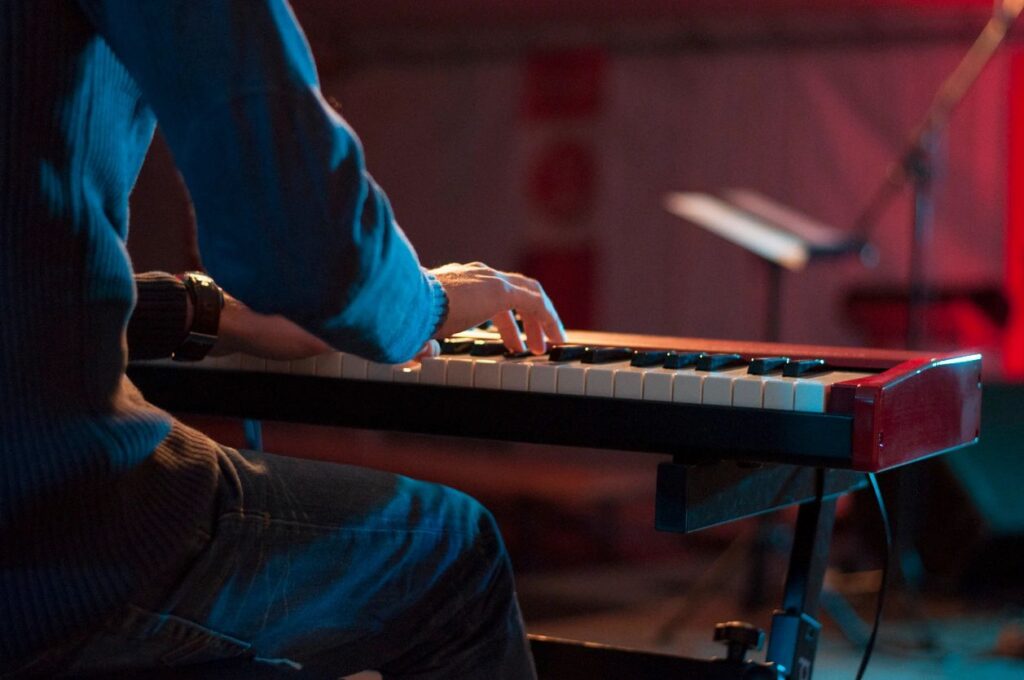
When it comes to pianos, there are three main types to consider: digital pianos, upright pianos, and grand pianos. Each type of piano has its own unique characteristics and features that make it ideal for certain situations and musical styles.
Digital pianos are electronic instruments that use sampled sounds to replicate the sound of an acoustic piano. They are often smaller and more portable than acoustic pianos, making them a popular choice for gigging musicians and those with limited space. Digital pianos also offer a range of features, such as the ability to adjust volume and play with headphones, as well as built-in effects and recording capabilities.
Upright pianos, also known as vertical pianos, are acoustic instruments that are designed to be placed against a wall. They are taller than digital pianos and have a vertical string arrangement, which allows them to have a larger soundboard and longer strings than a digital piano of similar size. Upright pianos are a popular choice for home use and can provide a rich and full sound that is suitable for a wide range of musical styles.
Grand pianos are the largest of the three types of pianos. They have a horizontal string arrangement and a large soundboard that allows them to produce a powerful, rich, and resonant sound. Grand pianos come in a variety of sizes, from the baby grand to the concert grand, and are often the instrument of choice for professional pianists and concert halls.
A Comparison
| Digital Pianos | Acoustic Pianos | |
| Size | Smaller and more compact than acoustic pianos | Generally not portable |
| Maintenance | Requires minimal maintenance, no tuning needed | Requires periodic tuning and maintenance |
| Price | Typically less expensive than acoustic pianos. Though there are the more expensive ones out there. | Typically more expensive |
| Sound Production | Reproduces digital samples of piano sounds. Some models suffer from “sound overload”. Sometimes when you try to play many notes at once, there is a limit to how “rich” the sound can be. | Hammers strike strings to produce sound |
| Action | May not have the same feel and response as an acoustic piano, but some models come very close | Keys are weighted and have varying degrees of touch sensitivity |
| Pedals | Most digital pianos have a sustain pedal and some have additional pedals, but they may not function the same as on an acoustic piano | Upright pianos typically have three pedals, the una corda pedal, a practice pedal, and a sustain pedal. Grand pianos on the other hand have three pedals, including a sustain pedal, sostenuto pedal, and the una corda pedal |
Next let us take a look at the differences between an upright and grand piano
| Upright Pianos | Grand Pianos | |
| Size | Taller and more compact than grand pianos, with the largest upright pianos reaching up to 131cm in height. | Typically ranges from 1.56m to 2.8m in length, taking up more floor space |
| Price | Typically less expensive than acoustic pianos. Though there are the more expensive ones out there. | Typically more expensive |
| Sound Production | Often described as having a more subdued sound compared to grand pianos. Though some of the more expensive ones can rival some smaller grands. | Typically considered to have a more resonant, full-bodied, and powerful sound than upright pianos Grand pianos have a larger soundboard than upright pianos, which contributes to their rich and powerful sound. Grand pianos typically uses a technique called duplex scaling, that allows for sympathetic vibrations to occur in the upper register of the piano, adding richness and depth to the sound |
| Action | Typically has a slightly lighter touch than grand pianos, which can make it easier for beginners Most upright pianos use a direct blow action, which means that the hammers strike the strings directly | Typically a heavier touch than upright pianos, and a lengthened key depth to reach the key bed Grand pianos typically use a more sophisticated double escapement action, which allows for faster repetition of notes and better control over dynamics and nuances. |
| Pedals | Upright pianos typically have three pedals, the una corda pedal, a practice pedal, and a sustain pedal. | Grand pianos on the other hand have three pedals, including a sustain pedal, sostenuto pedal, and the una corda pedal |
Why a Grand Piano Sounds Richer
In a grand piano, the soundboard is a large, thin piece of wood that amplifies the vibrations of the strings and projects them into the air. When a key is struck, the hammer strikes the string, causing it to vibrate. As the string vibrates, it produces a fundamental pitch and a series of overtones, which resonate through the soundboard. These overtones give a sound its unique character and can greatly affect the richness and depth of the sound.
In grand pianos, the soundboard is also designed to resonate with the overtones of the strings, amplifying them and giving the piano a rich and full sound. This is achieved through a process known as duplex scaling. Duplex scaling involves placing small, unstruck strings called “duplex scales” above the main strings of the piano. These duplex scales are tuned to vibrate sympathetically with the overtones of the main strings, creating a fuller and more complex sound.

